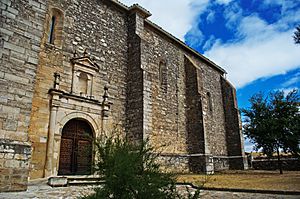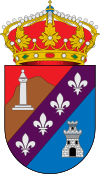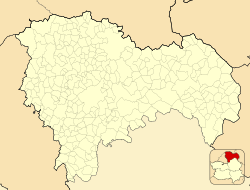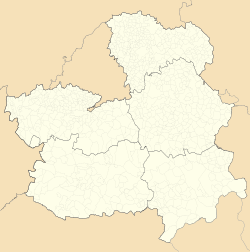Algora facts for kids
Quick facts for kids
Algora, Spain
|
||
|---|---|---|
 |
||
|
||
| Country | ||
| Autonomous community | Castile-La Mancha | |
| Province | Guadalajara | |
| Municipality | Algora | |
| Area | ||
| • Total | 47 km2 (18 sq mi) | |
| Population
(2018)
|
||
| • Total | 77 | |
| • Density | 1.638/km2 (4.24/sq mi) | |
| Time zone | UTC+1 (CET) | |
| • Summer (DST) | UTC+2 (CEST) | |
Algora is a small town, also called a municipality, in Spain. It is found in the province of Guadalajara. This area is part of the Castile-La Mancha region of Spain.
In 2004, about 112 people lived in Algora. By 2018, the population was around 77 people.
Ancient Discoveries in Algora
Algora is famous for a special discovery nearby. Scientists found a fossil site from a very long time ago. This time period is called the Cenomanian age. It was about 100 to 94 million years ago!
What Was Found?
The ground at this site is sandy. It shows signs that tides from an ancient sea once moved through it. This means the area was likely covered by water millions of years ago.
Scientists found fossils of animals with backbones, called vertebrates. These animals came from two huge ancient landmasses. One was called Gondwana and the other was Laurasia.
Supercontinents Explained
Millions of years ago, Earth's continents were not where they are today. They were joined together in giant landmasses called supercontinents.
- Gondwana was a supercontinent in the southern hemisphere. It included land that is now South America, Africa, Antarctica, Australia, and India.
- Laurasia was a supercontinent in the northern hemisphere. It included land that is now North America, Europe, and Asia.
Finding fossils from both Gondwana and Laurasia in Algora is very exciting. It helps scientists understand how animals moved around the world long ago. It also shows how these huge landmasses changed over time.
See also
 In Spanish: Algora para niños
In Spanish: Algora para niños





